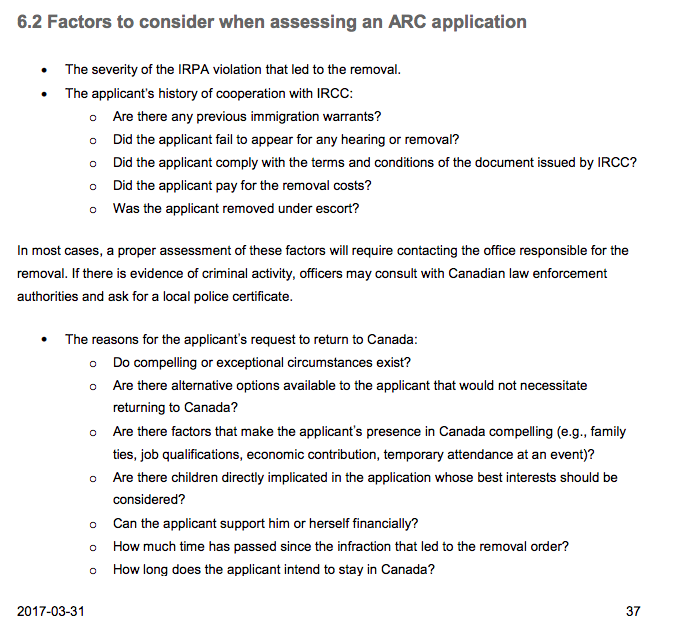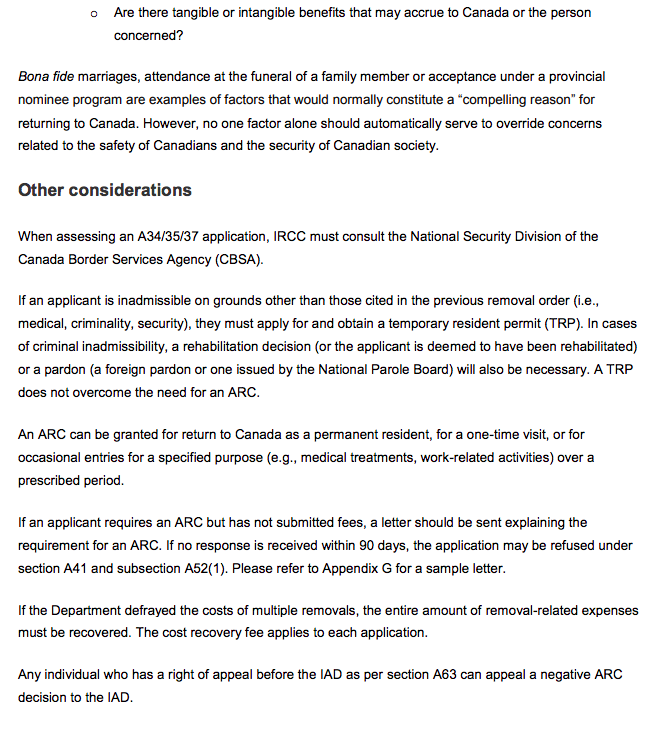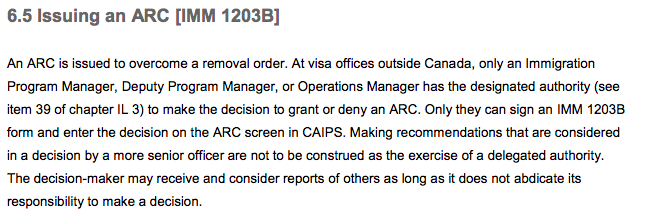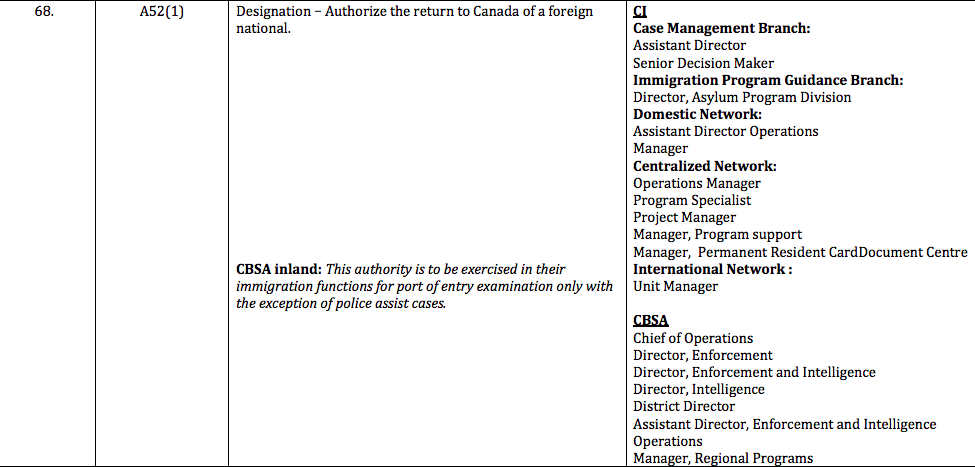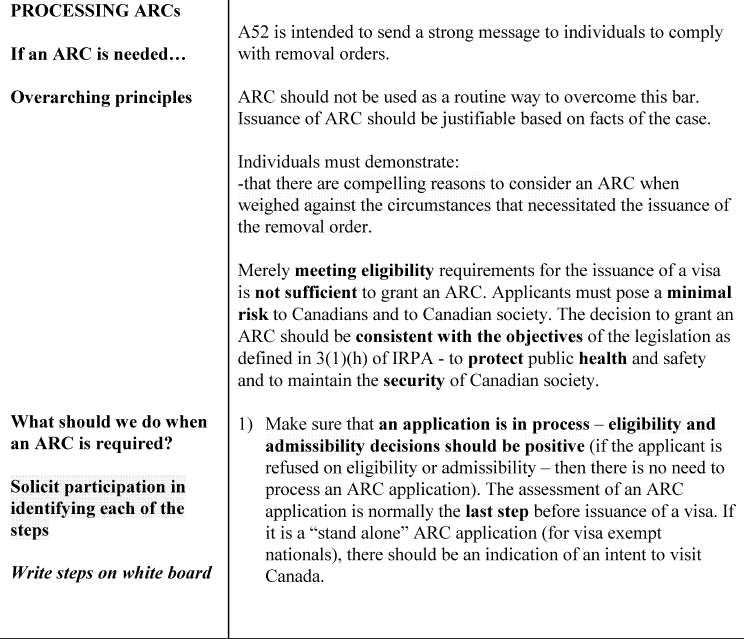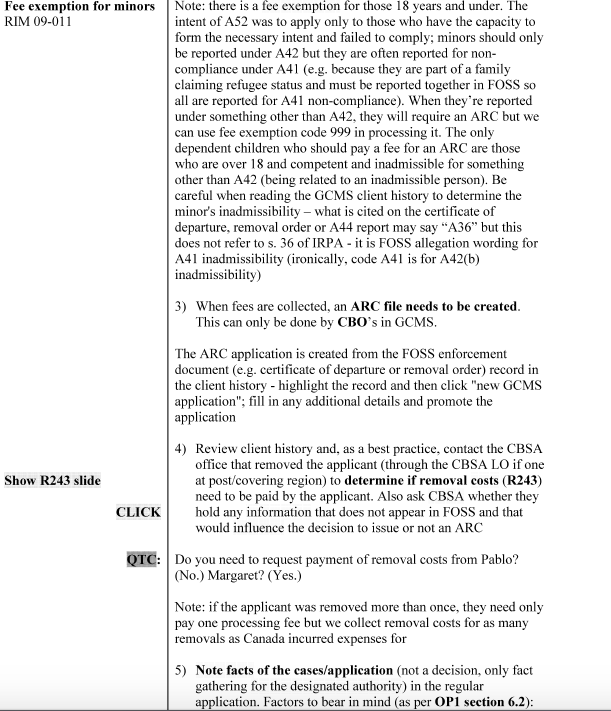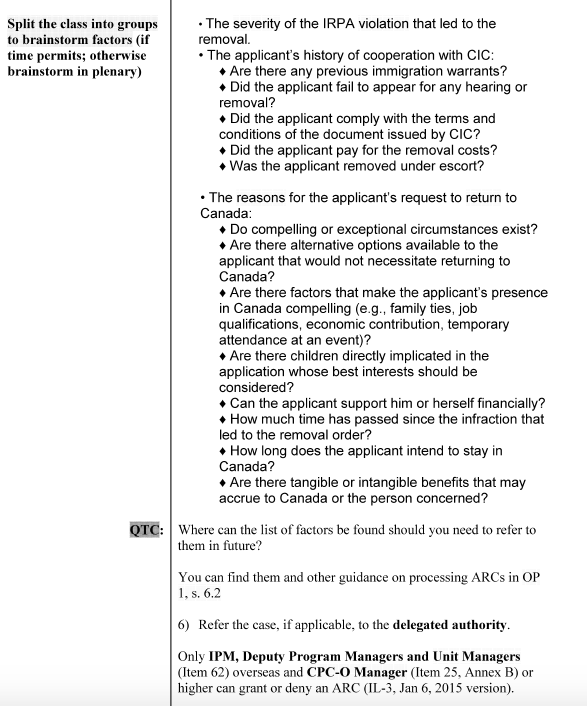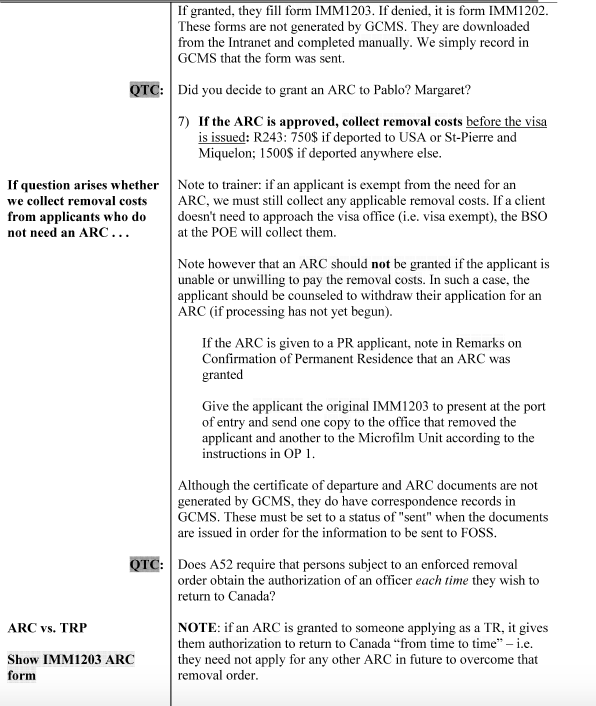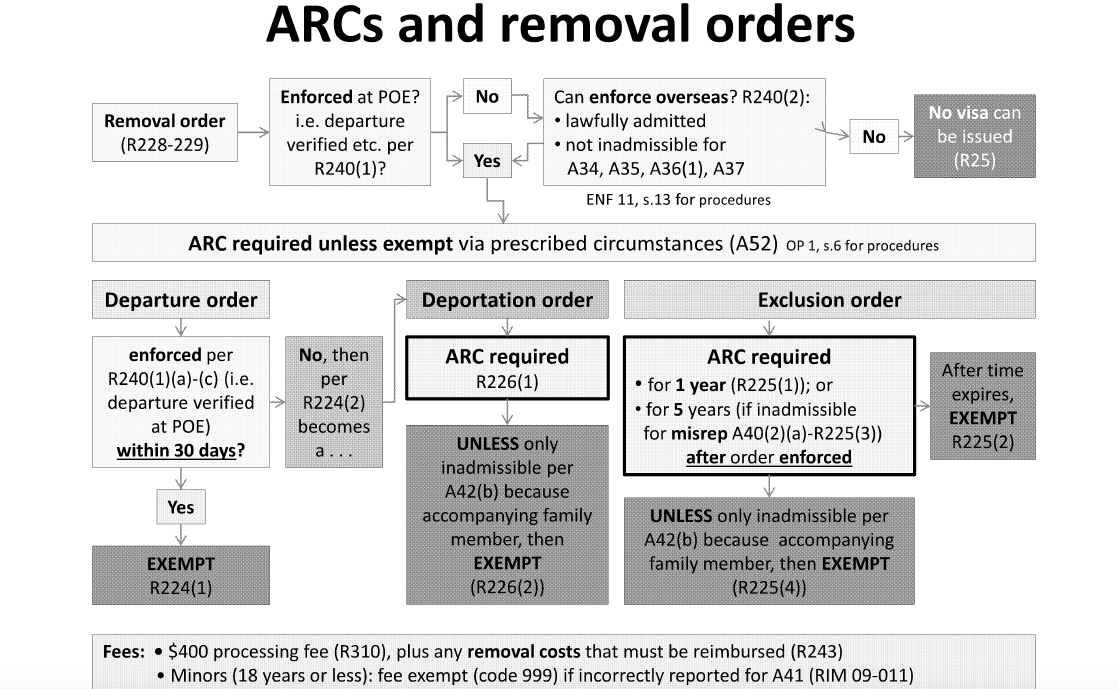With an increase in individuals being removed from Canada on exclusion and deportation orders, the practice of filing Authorization to Return to Canada Applications (“ARC Applications”) is on the rise.
Per IRCC:
A52(1) provides that if a removal order has been enforced, a foreign national shall not return to Canada unless authorized by an officer or in other prescribed circumstances. A removal order is considered to have been enforced whether the client either leaves voluntarily or is removed by the Minister.
R226(1) provides that for the purposes of A52(1) and subject to R226(2), a deportation order obliges a foreign national to obtain the written authorization of an officer in order to return to Canada any time after the deportation order has been enforced.
The consequences of trying to return to Canada after an exclusion/deportation order without having filed an ARC is a deportation order per the operation of R. 228(1)(c)(ii):
228(1) For the purposes of subsection 44(2) of the Act, and subject to subsections (3) and (4), if a report in respect of a foreign national does not include any grounds of inadmissibility other than those set out in the following circumstances, the report shall not be referred to the Immigration Division and any removal order made shall be
…..
(c) if the foreign national is inadmissible under section 41 of the Act on grounds of
…..
(ii) failing to obtain the authorization of an officer required by subsection 52(1) of the Act, a deportation order,
As a specified removal order, this does not need to go the Immigration Division and can be issued by a CBSA Minister’s Delegate.
Going Behind the ARC Application
IRCC gives very little guidance (online) on what should be an ARC application.
Indeed, the online guidance is limited to the following as posted on their website.
Important information
When an officer assesses your application, they will consider, among other things:
- the reasons for the removal order
- the possibility that you will repeat the behaviour that caused the order to be issued
- the length of time since the order was issued
- your current situation
- the reason why you want to enter Canada.
An incomplete or illegible application will be returned without being processed.
There is no guarantee that you will be issued an Authorization to Return to Canada.
There is another source – OP 1 – Procedures at 6.2 that sets out more details on what is assessed:
Note how detailed the analysis at each stage and how it suggests that there is the need for significant documentation.
The above seem to follow the words of Immigration Lawyer, Richard Wazana who said recently in an Immigration Lawyer’s Listserve: “Do not take anything for granted on Authorization to Return to Canada (“ARCs). Make thorough submissions and support them with evidence, like you would an H&C.”
Who Can Issue an ARC?
OP 1 at 6.5 provides the following:
This makes it clear that there will likely be multiple Officers involved in a decision but restrictions around the decision-maker.
It also suggests that there can be other decision-makers other than at visa offices abroad, which a closer look at the Instruments of Designated Authority confirms.
My experiences have been limited to overseas offices but the authority expands beyond that to members of IRCC’s CMB and senior CBSA members just to name a few. It will be interesting to better understand that decision-making/referral network.
Let’s look at it from the inside.
I’ve managed to get my hands on the training guide used (2017 results, so slightly dated and may not be what IRCC presently utilizes), but does add a little more conversation (especially processing-wise) to the resources we’ve been able to build.
The above is important especially to remember that eligibility is assessed before ARC in the process so the need to file ARC does not diminish the need to file a strong baseline application.
In this page remember the issue of paying removal costs and that this needs to be resolved before the ARC.
These factors track OP 1, 6.2 and also refer to the Instruments of Delegated Authority that I pointed to earlier.
Here, note ARC does not need to be filed each time. The first ARC is all that is needed so a strong application is crucial.
Remember too that a TRP can overcome the need for an ARC – but that an exceptional case needs to be made out for this.
Finally, here’s a helpful chart from the training guide that may be worth putting up on your wall to remind you of the interaction between ARC and removals.
All the process is good to know but I would suggest that the most important parts of an ARC involve two stages – (1) making a strong case for initial eligibility; and (2) drawing those factors to make a compelling and exceptional case for why you deserve to return to Canada notwithstanding your past immigration history.
Hope this post helps guide you in that journey!
